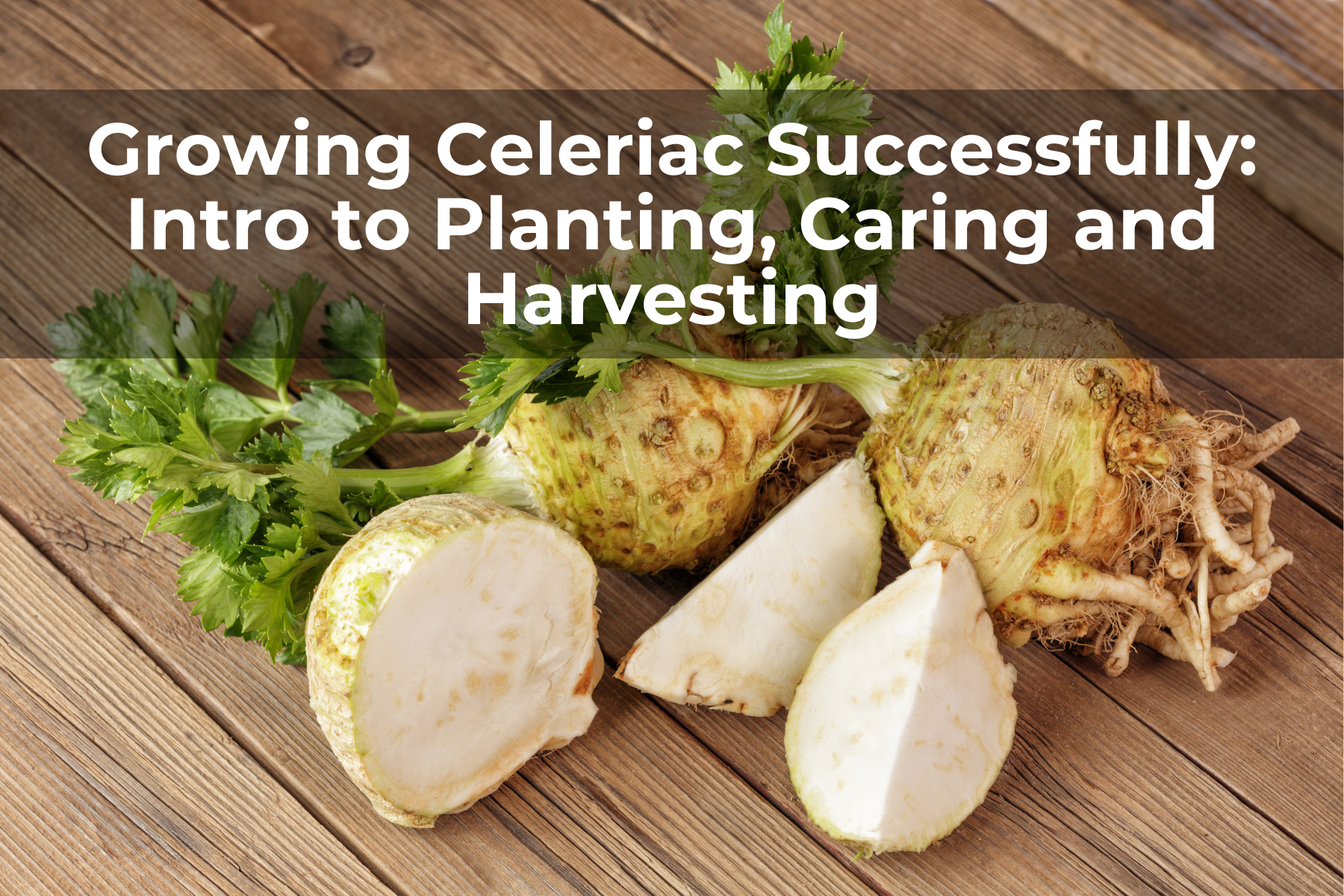Last Updated on April 12, 2024 by Real Men Sow
Growing celeriac successfully has similar growth habits and requirements to celery. Celeriac is also known as celery root or knob celery, a cool-season biennial, is an annual. They do best in cool climates. Celeriac is best to grow indoors before being transplanted into the garden. Plant the seed indoors at least 10 weeks before the last frost date of spring. Celeriac takes 90 to 120 days for harvest.
Description
Celeriac has large, swollen roots that look like turnips. Although the root grows at the same soil level as a turnip, celeriac is a member of the celery family with a similar growth pattern. A rosette of dark-green leaves grows from the root on top of hollow stems.
Planting Celeriac
Site
Celeriac thrives in full sun but can be grown in light shade. They should be in moist soil that is well-drained and rich in organic matter. Planting beds should be amended with aged compost before growing celeriac. Celeriac is a heavy-feeder; it provides a side treatment of compost tea to plants every 2 to 3 weeks during the growing season.
Time for Planting and Growing Celeriac Successfully
Celeriac thrives in cool temperatures, particularly where the nights are cool. In cold-winter areas, growing celeriac happens in spring; in warmer regions, starts in the late summer to mature in cool temperatures. They take a while to germinate so it is best to grow from transplants. Plant seed indoors at least 10 weeks before the average last frost date for spring. The average last frost date is when plants can be put in the garden. Celeriac can take up to 120 days before reaching harvest. If there’s enough time, a late-summer crop can be sown directly in the garden.
Planting and Spacing
Sow celeriac seeds 1/8 inch deep. To keep the soil moist until the plants start to sprout, cover the area with a burlap or seed cloth. If the plants reach 3-4 inches (7.6-10cm tall), thin them to 6-8 inches (15-20cm), or transplant them to the garden at this distance. Place rows 24-30 inches apart (61-76 cm). Celeriac is usually planted in 3- to 4-inch (7.6-10cm), deep trenches similar to celery. The soil can be mixed around the root as the plants grow.
Companion Plants
Lettuce, spinach, English peas. Caution: Don’t plant celeriac with squash, pumpkins, and cucumbers.
Growing Celeriac Successfully in Containers
Celeriac can also be grown in containers, but it is not recommended. For a single plant, choose an 8-inch (20cm) container.
Caring and Growing Celeriac
Water and Feeding
Celeriac needs to be watered regularly as it is shallow-rooted. They will stop growing if there is not enough moisture in the soil. The top few inches of soil should be kept moist.
General Care
To avoid competing for nutrients and water, keep celeriac plants beds weed-free. It’s best to avoid the shallow roots of celeriac, by cultivating them with care. To blanch the bulbous root, trim the sides as it develops. While the outside of the root will turn white, the flesh will still be brown.
Pests and Diseases
Celeriac does not have serious diseases and pests.
Harvesting and Storing Celeriac
Harvest
Harvest celeriac when its roots measure 3 to 4 inches (7.6-10 cm) in diameter or slightly more. To remove the stems from the knobby roots, use a garden fork. Celeriac will improve in flavour after a light frost, but it should still be harvested before the first hard freeze. The leaves can help flavour stews and soups. You may also harvest them from seeds between 110 and 120 days.
Storing and Preserving
Keep celeriac in the fridge for up to one week or in a cool, dry place for up to three months. You may also keep them in the ground if the soil is not frozen. You can use the leaves in soups or stews.

